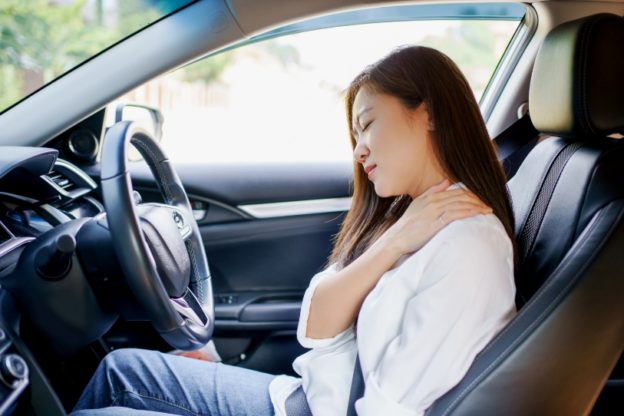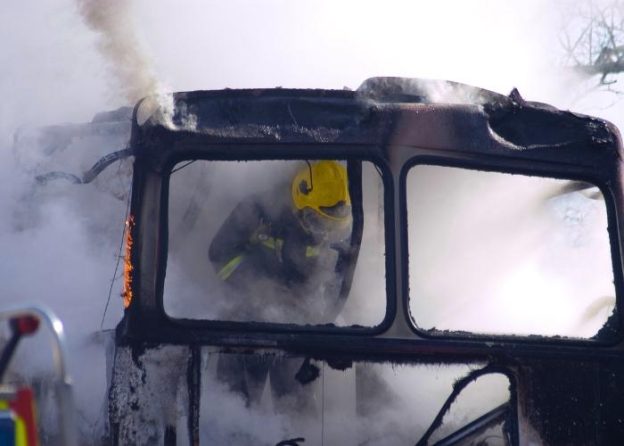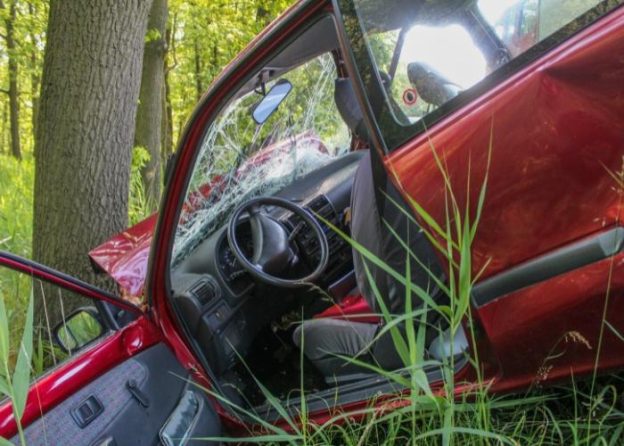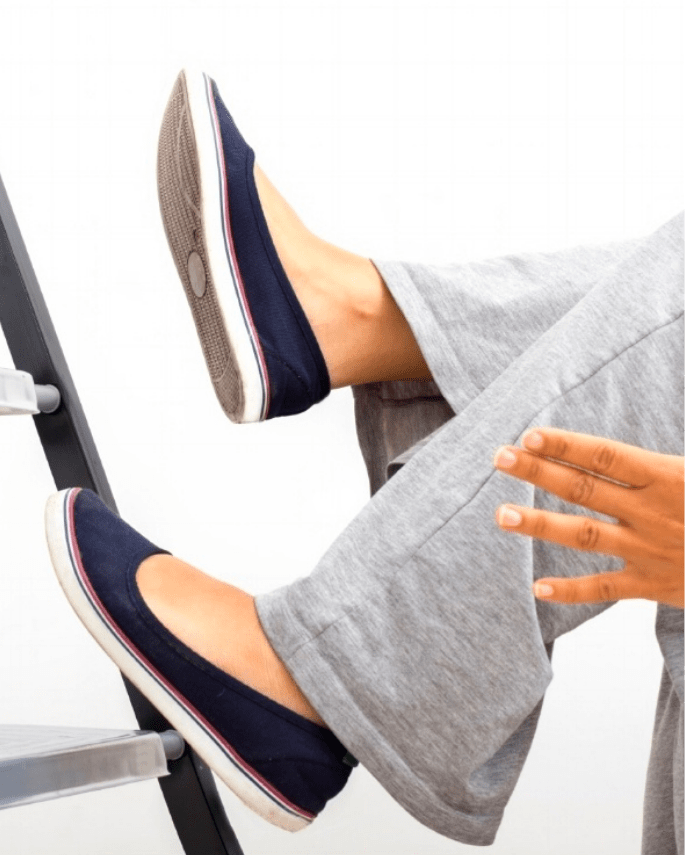10 Steps to Take If Your Child was Injured in a Car Accident (Infographic)
Car accidents are already a harrowing and dangerous experience for the people involved, but it can be more terrifying for parents with children inside the car as well.
If you’ve been in a motor vehicle accident with your child, it’s vital to have some knowledge of what can be done during this situation.
Here are 10 steps you should take to deal with your child’s injuries after being involved in a car crash:
I met with Harry Brown personally and he sat with me for 20 minutes at our initial consultation to explain everything. He even called after my surgery to see how I was doing. I met with him several more times after that and was kept informed about my case throughout. I highly recommend Harry Brown as an attorney.

1. Check on your Child
After a crash, the first thing you should do is take a moment to check on your child. Try not to move if you are seriously hurt until help arrives, but if you feel able to move, then check on your child.
If you believe they are seriously injured, do not remove them from their position in the car unless it’s absolutely necessary. They should be carefully removed from the car seat by the first responder.
Still, you should find out if they have sustained any damage to their head, neck, or spine while waiting for the EMTs.
2. Seek Medical Treatment Immediately
Even if your child can get out of the car or if they are functioning normally, it does not mean they do not require any medical treatment. Not all injuries would be obvious at first. Many young children or teenagers with head injuries don’t immediately notice that something is wrong with their physical or cognitive functions. Other types of injuries will not begin to hurt until several minutes or hours have passed.
Once the paramedics arrive, allow them to take your child out of the car seat and conduct an examination as they’re trained to look for an injury. They’ll be able to determine if your child needs to get to the emergency room as quickly as possible.
Prompt medical treatment improves the long-term outcome of the injury. In addition, it would be an advantage when building a solid injury case against the other driver.
3. Call the Police
The police are required to be called immediately even if nobody got hurt, this goes for any car accident.
Once the police arrive, discuss the accident in detail. The police will file an accident report and investigate to help establish who’s at fault. These steps will be useful to help move forward with your insurance claim for you and your child’s injuries.
In addition, you need to exchange information with the other driver such as personal information, insurance card as well as take photos of the scene.
4. Monitor your Child’s Condition
As a parent, it’s up to you to keep an eye on your child for the next few days after a car accident even if they appear to be unscathed at first.
Some injuries may take time to manifest, while others may even worsen as time passes. Pay special attention to certain signs that may reveal conditions that need immediate medical attention.
Trust in your parental instinct when it comes to observing for signs that something is little off or seriously wrong. If you notice some changes or if you’re simply worried, do not hesitate to take your child to the doctor.
5. Schedule a Doctor Follow Up Visit
Your child should be taken for a follow up check up with their pediatrician within a couple of days after the accident whether or not you notice the symptoms of an injury.
This would ensure that a trained professional would examine your child and see if their conditions have changed since the crash.
It would also make sure that there are additional records of your child’s condition after the accident. These records will be necessary when you file an insurance claim.
For this purpose, medical bills and records of injuries and treatment from the hospital that you or your child receives, including the date, attending physician, and costs of any follow-up appointments should be collected.
Any documents from a medical provider would be helpful since their reports are more credible in court than personal accounts.
6. Help them Recover from the Trauma
Physical injuries aren’t the only thing a child could sustain after a car accident. As a traumatic experience, the crash would have repercussions to their mental health.
While many are resilient and able to cope and recover, others might have a hard time dealing with the trauma. It’s the reason why it’s critical for parents to be on the lookout for behaviors that might indicate that their child is having a difficult time with their recovery.
Younger children might go back to their infantile behaviors such as bedwetting or sucking their thumbs while older children might develop nightmares, behavior problems, depression symptoms, and headaches.
It will help with the child’s recovery if their parents listen to their concerns or complaints.
Sometimes even small conversations can eventually lead to big revelations. Therapy would also be helpful.
Ready to Talk to a Lawyer Who Has Your Back?
7. Consult with your Auto Insurance
In an at-fault state like Georgia, the other driver who caused it as well as their insurance company will generally be responsible for your injuries and the damages.
However, it would be helpful to talk to your insurance company if you have other forms of coverage that might give you benefits as soon as possible. Consult with your auto insurance to file a claim after seeking medical treatment for your child.
8. Prove the Child’s Damages
In a catastrophic case involving a child, it is necessary that you substantiate all of your claims with evidence that supports the version of events that led up to the accident as well as your claims for all the physical and mental damages that your child has suffered.
9. Prove the Other Party’s at Fault
The next step in the process is to prove that the other party is at fault. There would be times when the at-fault party and their defense lawyers would attempt to shift the blame on the parents for causing the accident to avoid paying.
Keeping the evidence you’ve gathered from drivers, witnesses, and the police would prove you aren’t responsible for all the damages. In at-fault states, this would decrease the parent’s responsibility and increase the child’s recovery.
Related Post: How to protect your assets in the case of a car accident
10. Hire a Car Accident Attorney
Since there are plenty of complications that may arise when your child gets involved in a car accident, it would benefit you immensely if you seek legal advice immediately.
An experienced car accident attorney can be trusted to speed up the process with your auto insurance and other vehicles that were involved in the accident. An attorney would also be able to focus on the case while you focus on caring for your child during this time.
The Car Accident Attorneys at the Brown Firm will be willing to assist you in legal matters relating to these accidents.
Contact the Brown Firm today at (912) 200-9755 or visit our website at www.www.harrybrownlaw.com to learn more about our services or receive a free legal consultation.
Our Recent Personal Injury Articles
When Taxi Drivers Cause Pedestrian Accidents: Legal Options for Injured Parties
A bus caught fire on Friday night at Ashford Dunwoody Road and I-285 West, causing delays during rush hour. The ramp was closed, and firefighters were able to put out...
Bicycle Accident Settlements – What Compensation Can You Expect?
A bus caught fire on Friday night at Ashford Dunwoody Road and I-285 West, causing delays during rush hour. The ramp was closed, and firefighters were able to put out...
Nursing Homes Overprescribing Drugs to Silence and Subdue Patients
A bus caught fire on Friday night at Ashford Dunwoody Road and I-285 West, causing delays during rush hour. The ramp was closed, and firefighters were able to put out...
How Long Do You Have to File a Wrongful Death Lawsuit?
A bus caught fire on Friday night at Ashford Dunwoody Road and I-285 West, causing delays during rush hour. The ramp was closed, and firefighters were able to put out...
Dog Bite Prevention: Educating Owners and the Public
A bus caught fire on Friday night at Ashford Dunwoody Road and I-285 West, causing delays during rush hour. The ramp was closed, and firefighters were able to put out...
Dog Bite Prevention: Educating Owners and the Public
A bus caught fire on Friday night at Ashford Dunwoody Road and I-285 West, causing delays during rush hour. The ramp was closed, and firefighters were able to put out...
Macon, GA – Two Teens in Critical Condition After Deputy Chase in Stolen Vehicle
A stolen vehicle chase with deputies left two teens in critical condition after they lost control of the vehicle.
Dunwoody, GA – A Bus On Fire On I-285 Causes Ramp Closure
A bus caught fire on Friday night at Ashford Dunwoody Road and I-285 West, causing delays during rush hour. The ramp was closed, and firefighters were able to put out...
Cartersville, GA – Pedestrian Fatally Hit By Train
A pedestrian in Cartersville, GA, was hit and killed by a train while crossing the tracks. The pedestrian's identity is unknown.
Macon, GA – Gray Highway Will Get New Pedestrian Crosswalks In Efforts To Decrease Pedestrian Fatalities
Concrete medianettes will be built on Gray Highway and Shurling Drive in Georgia to improve pedestrian safety. These medianettes will provide a safe space for pedestrians to cross busy roads,...
Contact The Brown Firm
Get the Answers and Compensation You Deserve
You’ll notice the difference when you contact The Brown Firm! Our local dedicated attorneys want to help you recover and rebuild.
Schedule your free consultation by calling (800) 529-1441 or completing our simple online form.





